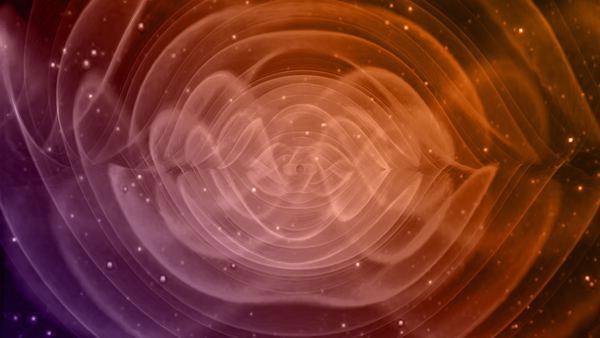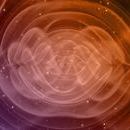 |
|---|
| Artistic representation of gravity waves. Henze/NASA |
 
|
Gravitational Waves Found in 1.3 Billion Year Old Black Hole Collision
PBS Nova
Wed Feb 10, 2016
Category: Science News
Last September, physicists started recording data from the new Advanced LIGO detectors, a pair of ultra-precise observatories waiting for the slightest perturbation that could suggest the existence of gravitational waves, the ripples in spacetime predicted by Einstein almost exactly 100 years ago. Then, after just 16 days, they found it.
The team spent the next several months double checking every angle to make sure that this was, in fact, the result they were looking for. It was.
"Ladies and gentlemen, we have detected gravitational waves," said David Reitze, executive director of LIGO Laboratory, in a press conference this morning. "We did it."
Advanced LIGO is a set of upgrades to of LIGO, the Laser Interferometer Gravitational-Wave Observatory, which is located in both Livingston, Louisiana and the other Hanford, Washington. The two outposts of the observatory both confirmed the result.
"The sensitivity of the Advanced LIGO is about four times greater than LIGO," said Greg Kestin, a physicist at Harvard University and producer of What the Physics. "It's not surprising with this version that they've seen something that we might have seen earlier but missed. The magnitude that you'd expect from black holes colliding is on the order of magnitude of what they can measure now.
"I'd have been more surprised if they didn't find anything eventually," Kestin said. "I'm surprised they found it so quickly."
The result landed in the form of a half-second thump-quite literally something that went bump in the darkness of space. Though it was brief, it was unambiguously caused by gravitational waves, likely from the collision of two orbiting black holes some 1.3 billion light-years away.
"I guess you could say we observed three black holes, two to begin with and one at the end," said Matthew Evans, an assistant professor of physics at MIT and a LIGO collaborator.
Physicists are in such new territory that they're having a difficult time ascribing a precise significance to the results, the standard by which their data is measured. "This results is at at least 5.1 sigma. And I emphasize at least, because all we can really do is set a limit on the significance," Evans said. "There was nothing in the background that looked anything like these events."
The two black holes were medium-sized but still the largest ever observed-29 and 36 solar masses. It is also the first time astronomers have witnessed the merger of a black hole.
Though the team didn't witness the merger with any other observatory, they're confident in their conclusion because it matches the prediction made by calculations supported by general relativity. The results are published in the journal Physical Review Letters.
The discovery of gravitational waves gives scientists an entirely new way of looking at the universe. "As we open a new window into astronomy, we may see things we've never seen before," Reitze said.


 Share your thoughts in the Forum
Share your thoughts in the Forum
